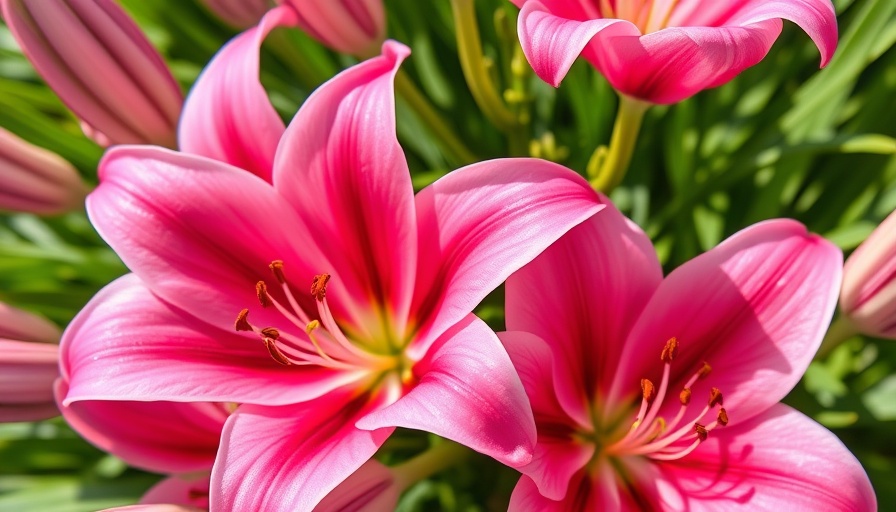
Introduction to Growing Beautiful Lilies
Lilies have enchanted gardeners and flower enthusiasts for centuries with their stunning blooms and delightful fragrances. Their diversity in color and design makes them one of the most popular garden and cutting flowers. Today, we delve into how to successfully grow lilies from bulbs, ensuring that your garden flourishes with these stunning perennials year after year.
The Allure of Lilies: A Brief History
Dating back over 4,000 years, lilies have a historical significance that adds to their charm. Ancient Greeks adored them, using their imagery in pottery and art. Throughout time, they have remained a favorite in cultures worldwide, symbolizing purity and refined beauty. Whether in sweeping gardens or small backyard landscapes, these flowers have cultivated their place in hearts and homes alike.
Understanding Different Types of Lilies
One common misconception among novice gardeners is the assumption that all lily-like flowers belong to the lily family. True lilies, identifiable by their distinctive bulb structure, stand apart from calla lilies and canna lilies, which are not actual lilies. In understanding their differences, you can better appreciate what makes true lilies thrive in your garden.
Essential Planting Instructions for Lilies
Before planting, it's crucial to know your chosen lily species, as each may have specific needs. As a general guideline, plant bulbs about six inches deep, with the pointy end facing up. Space them 12 inches apart for optimal growth. For better results, mix in compost when planting to enrich the soil.
Optimal Conditions for Growing Lilies
Lilies flourish in areas that receive ample sunlight yet also require some shade during the hottest part of the day. Ideally, choosing a location with well-draining soil will prevent waterlogging, which can rot the bulbs. Aim for a soil pH of 6 to 6.8, and consider adding organic matter to enhance fertility.
Watering and Maintenance Tips
While lilies are hardy, they still require thoughtful care. Ensure a consistent watering schedule, especially in dry spells, without creating overly saturated conditions. Incorporating mulch around your lilies can help retain soil moisture, suppress weeds, and gradually enrich the soil as it decomposes.
Using Lilies as Cut Flowers
One of the many joys of growing lilies is their capability as cut flowers. To prolong their beauty in a vase, cut the stems when the buds are just beginning to show color. Remove excess foliage and place them in a clean vase with fresh water, keeping them in a cool, ventilated area away from direct sunlight.
Safety First: Caution About Cats
It's important to note that while lilies are safe for humans, they can be highly toxic to cats. Pet owners should consider this fact when introducing lilies into their homes or gardens. Should you notice any adverse reactions in your pets, contacting a veterinarian immediately is essential.
Fun Growing Projects with Lilies
Incorporating lilies into your gardening projects can be fulfilling, from creating stunning flower beds to designing outdoor arrangements that attract pollinators. Engage with fellow gardening enthusiasts and share your experiences and successful techniques!
Conclusion and Invitation to Explore Gardening
Lilies contribute remarkable beauty, history, and symbolism to our gardens. Whether you seek to decorate your backyard with elegant styles or involve your children in planting these lovely bulbs, the experience of growing lilies will surely enrich your gardening journey. Join the community of enthusiastic gardeners today and explore the myriad of gardening tips and landscaping ideas to make your outdoor space blossom.
 Add Row
Add Row  Add
Add 




Write A Comment